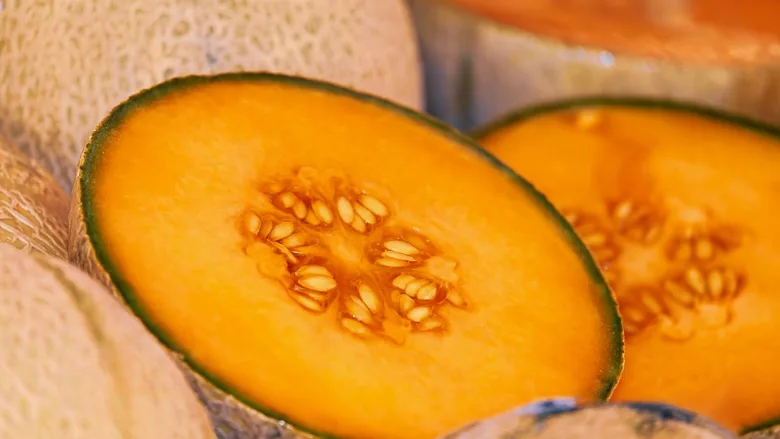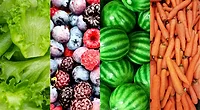Effective Controls for Microbial Hazards in Fresh Produce According to FAO, WHO

Credit: Couleur via Pixabay
The Food and Agriculture Organization of the United Nations (FAO) and World Health Organization (WHO) have released a summary of the most recent Joint Expert Meetings on Microbial Risk Assessment (JERMA) session on the prevention and control of microbiological hazards in fresh fruits and vegetables. The meeting was held virtually on May 16–June 3, 2022, and was the final session in a series of JERMA discussions about control points and mitigation strategies for microbial risks associated with fresh fruits and vegetables throughout the entire supply chain.
The first JERMA meeting on the prevention and control of microbiological hazards in fresh fruits and vegetables was held in September 2021, and focused on fresh, ready-to-eat (RTE), and minimally processed fruits and vegetables, such as leafy greens. The second session was held in November 2021, in which a subcommittee focused on sprouts and seeds for sprouting. The third and final meeting discussed commodity-specific interventions for all other fresh fruits and vegetables of concern.
In total, the meetings addressed four commodity groups that were clustered based on similar physical characteristics, intervention measures, and available scientific literature:
- Leafy vegetables and herbs
- Berries and tropical fruits
- Melons and tree fruits
- Seeded and root vegetables.
Commodity-specific interventions were identified for various target bacteria, parasites, and viruses, as well as indicator organisms. Control points were considered for each stage along the supply chain, from farm to retail. Potential chemical, biological, and physical intervention strategies were also evaluated. To make its assessments, JERMA reviewed available scientific literature and data to discern the efficacy of interventions for specific commodities, and determined the practical merit of intervention strategies by considering the potential costs, availability of resources, environmental impacts, implementation difficulties, training needs, regulatory hurdles, consumer acceptance, and geographical variances.
Interventions for All Commodity Groups
JERMA drew several conclusions that apply to all commodity groups. For instance, the application of preventive measures such as Good Agricultural Practices (GAP) and Good Hygiene Practices (GHP) during cultivation and harvest was decided to be the most effective means of mitigating the risk of microbial contamination. During post-harvest processing, JERMA stressed the importance of GHP, Good Manufacturing Practices (GMP), and preventive systems based in the Hazard Analysis and Critical Control Points (HACCP) framework.
Poor quality of irrigation water and processing water were also highlighted as large risk factors for microbial contamination across all commodity groups. JERMA recommended that water be treated when necessary; for example, with ultraviolet (UV) or filtration for irrigation water, and with chemical sanitizers or certain experimental, physical methods for processing water.
In general, JERMA underlined the need for future research to intentionally address the practicality of new control technologies and their efficacy in different applications, as there is a notable lack of industry adoption for many promising interventions. JERMA also highlighted that the number of foodborne illness outbreaks caused by viral or parasitic pathogens is disproportionate to the available research on mitigation measures, which primarily focus on bacterial pathogens.
Looking for quick answers on food safety topics?
Try Ask FSM, our new smart AI search tool.
Ask FSM →
Interventions for Leafy Vegetables and Herbs
Regarding leafy vegetables and herbs, JERMA found none of the traditional, immediate post-harvest interventions for whole produce to be reliable at reducing the presence of pathogens. Examples of such strategies include washing, and post-processing chemical and physical treatments. However, irradiation was shown to be the most effective post-harvest treatment for fresh-cut leafy greens. Additionally, experimental evidence points to the potential of electrolyzed water in combination with other physical treatments, including ultrasound or exposure to UV, in reducing bacterial pathogens. JERMA also noted two emerging control strategies for which there is limited research and possible barriers to application: the use of bacteriophage or phage lysins, and the use of sanitizers.
Interventions for Berries and Tropical Fruits
The available research on intervention measures for berries, and to a greater extent, tropical fruits, is limited. Most existing papers relate to virus mitigation for strawberries, blueberries, and raspberries. However, water-assisted light treatment—such as UV and pulsed light—show some promise in reducing the presence of microbial contaminants, but efficacy of the treatments are dependent on how the berries are inoculated. Ultrasound treatment in combination with chemical sanitizer also showed some efficacy; however, adverse effects on product quality were reported. Gaseous treatments, including chlorine dioxide and sulfur dioxide, had variable effects depending on the dose and pathogen assessed.
Interventions for Melons and Tree Fruits
Proper hygienic handling and environmental monitoring during sorting and packing was demonstrated to be the most crucial intervention for melons and tree fruits. Managing good process water quality is also important, and JERMA suggested the use of chemical disinfectants or UV treatment to reduce pathogenic microbial load in the water. While the majority of decontamination treatments for the surface of melons and tree fruits have not proven effective, the specific use of gaseous disinfectants in the atmosphere during prolonged refrigerated storage was highly effective for pome fruits.
Interventions for Seeded and Root Vegetables
Several interventions were deemed effective for seeded and root vegetables, such as irradiation, gaseous chlorine dioxide treatment, and UV decontamination. A novel antimicrobial combination of hydrogen peroxide, ethylenediaminetetraacetic acid (EDTA), and nisin also showed promise. JERMA also noted that the delivery of chemical interventions can be improved by physical means; for example, the incorporation of vacuum impregnation into a washing process.









